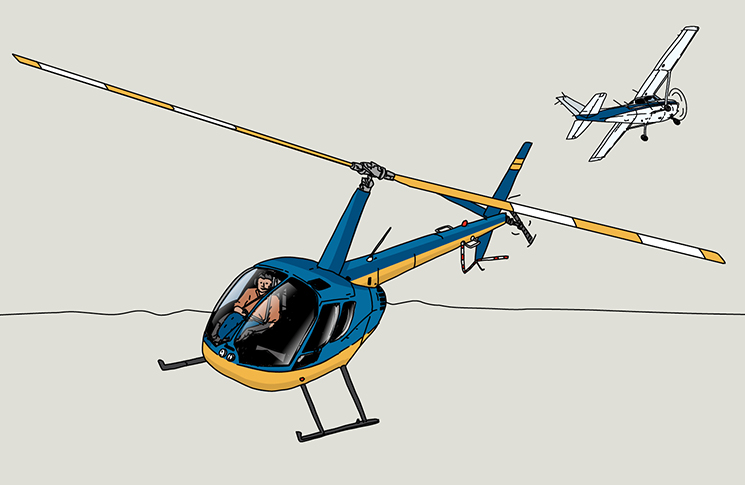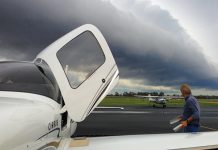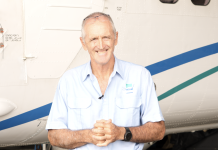Just an early spring morning in 2024. The weather was clear skies and I was excited to be closer to finishing my solo hour requirement for my CPL helicopter flight test.
I pre-flighted the R44 I was flying that day, asked the supervising instructor to sign me out for the flight and I was away! The flight was purely to build my solo time. There was no time pressure as I was free to return at any time.
Pickup, taxi and departure out of Essendon was all routine, and once out of the control zone, I entered non-controlled airspace and headed west, staying around 1,500 feet AGL and then 1,000. I felt being lower was more comfortable in a helicopter, staying away from the higher flying fixed-wing aircraft in the area. I knew that there was a non-controlled aerodrome not too far away and, as routine, made my 10 nm positioning call.
As it was early in the day, there wasn’t much traffic about and I continued tracking west, at 8 to 10 miles due south of the aerodrome. Once past the hills, I turned south as part of my plan. I continued south until I hit the time that required me to return to base.
I turned through 180 degrees and began retracing my flight path north.
I screamed expletives to myself (not broadcast, thankfully) and pushed the cyclic hard over to the left.
The day had started to warm up and had become significantly bumpier to fly through as the hot air started rising from the heated surface.
R44s don’t enjoy turbulence and I have the fear (real or not) of mast bumping in flight through turbulence. The straightforward answer to this is slow down and, in my mind, climbing higher would reduce the effect of the turbulence on my helicopter. I climbed up to 2,500 feet and proceeded on my way.
I was feeling pleased with myself on this decision for comfort and, approaching the non-controlled aerodrome, I again made my 10 nm position report – 10 nm to the south and tracking east.
There was some traffic in the circuit but no aircraft in close proximity.
As I continued, contemplating my next course change, I noticed a little black spot in my window. There had been no position calls made since my call so I was a little perplexed as to what this spot was.
In the space of about 5 seconds, the spot went from a dot to what seemed a very large high-wing Cessna 172, filling the whole of my right-side bubble and coming right towards me!
I screamed expletives to myself (not broadcast, thankfully) and pushed the cyclic hard over to the left to increase the separation between the aeroplane’s right wing and my disc!
I suspect the other pilot also received a nasty shock as they banked to their left sharply and dived away.
I remember broadcasting, ‘That was a bit close, eh?’ but received no reply.
Suitably shaken, I proceeded to return to base by the most direct route. I landed uneventfully.
After I shut down, my instructor met me on the apron to greet me with, ‘So how did it go?’
I proceeded to have a significant debrief on the circumstances around the near miss and the improved proactive measures I could have taken to avoid the incident. 
Lessons learnt
While in the vicinity of the non-controlled aerodrome, I had failed to monitor the Area frequency.
The R44 I was flying had 2 radios. I should have used one for broadcasting on the CTAF and the second one to monitor the Area frequency. ATC may have issued a proximity alert and I could have acted earlier. If you have 2 radios on board, use them!
Non-controlled operations is one of the special topics on our Pilot safety hub. Refresh your knowledge at casa.gov.au/pilots.
Have you had a close call?
8 in 10 pilots say they learn best from other pilots and your narrow escape can be a valuable lesson. We invite you to share your experience to help us improve aviation safety, whatever your role.
Find out more and share your close call.
Disclaimer
Close calls are contributed by readers like you. They are someone’s account of a real-life experience. We publish close calls so others can learn positive lessons from their stories, and to stimulate discussion. We do our best to verify the information but cannot guarantee it is free of mistakes or errors.






Comments are closed.